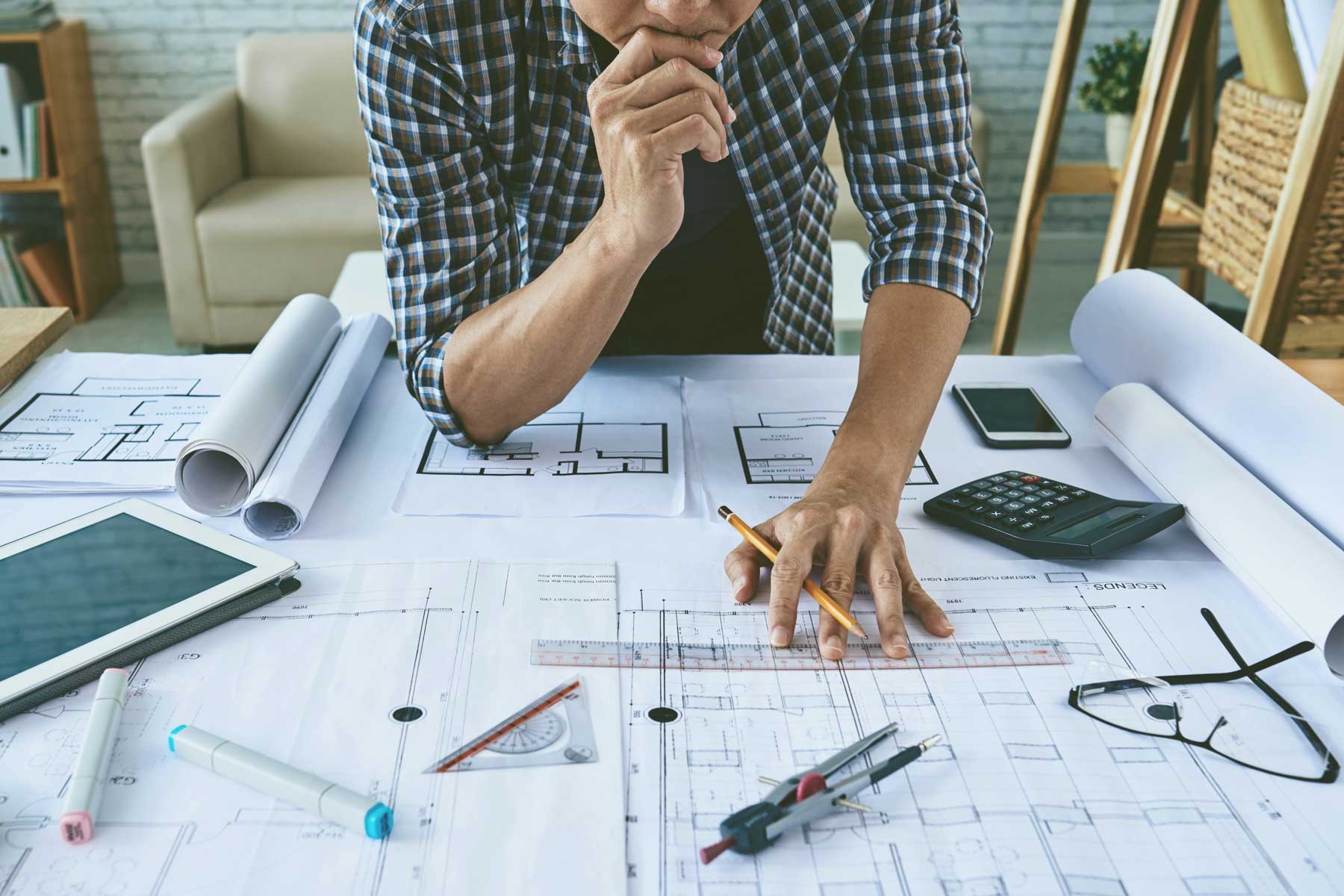Architect Design Styles to Track in the Coming Year
Understanding the Diverse Job Paths Available for Aspiring Architect
As an ambitious Architect, you have a globe of job courses waiting for you. Each course uses special challenges and possibilities to use your imagination and technical know-how. Whether you're attracted to standard architecture or the subtleties of sustainable layout, there's a specific niche that straightens with your interests. Understanding these diverse options can form your specialist journey, however which instructions will you select to explore first?
Conventional Style: Designing Buildings and Frameworks
Typical style concentrates on designing buildings and structures that blend functionality with aesthetic allure. Your styles can reflect cultural heritage, showcasing neighborhood practices while fulfilling modern demands.
You'll develop skills in drafting, model-making, and website evaluation, enabling you to picture and connect your concepts properly. Involving with clients, you'll require to understand their vision and equate it into viable styles.
Additionally, building codes and sustainability methods are essential in your work, guaranteeing your structures are environmentally pleasant and safe. As you grow in your profession, you'll discover possibilities in household, commercial, and even restoration jobs, each offering one-of-a-kind difficulties. Accepting traditional style leads the way for a meeting occupation that admires the past while shaping the future.
Urban Planning: Shaping Neighborhoods and Public Spaces
As a hopeful Architect, you can play an essential function as an urban coordinator, changing how areas communicate and work. By using neighborhood engagement approaches, you'll ensure that locals have a voice in forming their atmosphere. Plus, integrating sustainable design concepts will aid develop areas that not only meet today's requirements however additionally safeguard the future.
Role of Urban Planners
While many might think of engineers as the sole visionaries behind structures, city organizers play a crucial function fit the more comprehensive landscape of communities and public rooms. They evaluate land use, zoning regulations, and community needs to create lasting environments that boost lifestyle. By collaborating with different stakeholders, you'll assist make parks, transport systems, and houses that promote social communication and access. Urban organizers additionally concentrate on ecological factors to consider, guaranteeing that growths integrate green rooms and assistance biodiversity. Your experience in spatial style and neighborhood dynamics permits you to envision future growth while preserving social heritage. In this crucial duty, you'll directly influence how people experience their surroundings, making every task a chance for positive adjustment.
Neighborhood Interaction Techniques
Effective area involvement approaches are important for city coordinators to assure that the voices of locals are listened to and valued in the preparation process. To promote significant dialogue, you ought to prioritize open discussion forums and workshops where neighborhood participants can reveal their ideas and concerns. Use studies and social media sites to reach a more comprehensive target market, guaranteeing varied point of views are consisted of. Teaming up with regional companies can improve trust and help with deeper links. It is essential to give clear info concerning decision-making processes and proposed projects, permitting citizens to really feel informed and equipped. By proactively including and listening feedback, you'll develop rooms that show the neighborhood's needs, ultimately bring about even more effective and sustainable city environments. Welcome transparency and constant dialogue for long lasting influence.
Sustainable Design Concepts
When making metropolitan rooms, incorporating lasting layout principles is crucial for creating environments that flourish both ecologically and socially. You need to begin by focusing on power effectiveness, making use of products that minimize waste and advertise recycling. Consider integrating green spaces, like gardens and parks, to enhance biodiversity and boost air high quality. Advertising walkability and public transportation can decrease dependence on cars, fostering a healthier neighborhood.
Creating with water preservation in mind is likewise key-- believe concerning rain yards and permeable surfaces to take care of stormwater. Including neighborhood participants throughout the planning process assurances that the rooms you create fulfill their demands and encourage social communication. By embracing these principles, you'll add to lively, sustainable city landscapes that profit everybody.

Landscape Architecture: Producing Sustainable Exterior Atmospheres
As you check out landscape design, you'll discover important design concepts that create practical and lovely outside areas. Sustainable techniques play an essential role in making certain these environments flourish while lessening environmental influence. Plus, you'll discover a range of occupation opportunities that permit you to make a genuine distinction in exactly how individuals engage with nature.
Design Concepts in Landscape
Comprehending layout principles in landscape architecture is crucial for creating sustainable outdoor settings that harmonize with nature. You'll need to contemplate components like range, percentage, and balance to guarantee your styles feel natural and welcoming. Including native plants not only enhances biodiversity but also lowers water use, making your landscape resistant. Think of the circulation of room and exactly how individuals communicate with it; pathways and seating locations ought to invite expedition and leisure. Furthermore, take note of seasonal adjustments, developing with products that enhance the surroundings year-round (Architect). By prioritizing sustainability and appearances, you can develop exterior areas that improve the neighborhood and promote well-being. Accepting these principles will certainly set a solid foundation for your occupation in landscape architecture.
Lasting Practices Overview
Lasting practices in landscape style not just focus on appearances however additionally prioritize environmental wellness and source preservation. You can design spaces that advertise dirt wellness, such as utilizing natural materials and practicing permaculture principles. Eventually, these methods assure your layouts benefit both individuals and the setting for years to come.
Career Opportunities Exploration
With a strong structure in lasting methods, landscape architecture supplies a range of job courses that allow you to make a meaningful influence on the atmosphere. Urban planners frequently collaborate with landscape engineers to produce green areas in urban setups, improving city livability. If you're enthusiastic regarding education and learning, think about ending up being a landscape architecture instructor, inspiring future generations.
Lasting Style: Concentrating On Eco-Friendly Practices
As you discover your profession in style, accepting environmentally friendly techniques can set you apart in a competitive area. Sustainable style concentrates on creating buildings that minimize environmental influence while enhancing passenger Learn More Here well-being. By including sustainable products, energy-efficient systems, and sustainable building methods, you'll add to a greener future.
Begin by gaining understanding of environment-friendly accreditations like LEED or BREEAM, which can strengthen your qualifications. Take into consideration exactly how all-natural light, ventilation, and thermal efficiency can optimize style. Collaborate with designers and environmental professionals to innovate remedies that reduce waste and conserve resources.
Do not forget the importance of community involvement-- appealing neighborhood stakeholders can inspire styles that harmonize with the atmosphere. As customers increasingly prioritize sustainability, your proficiency in environment-friendly practices will not only bring in tasks but likewise meet your interest for accountable design. Accept this crucial aspect of the career, and see your profession prosper.
Historical Preservation: Safeguarding and Bring Back Cultural Heritage
While you begin on your building trip, take into consideration the essential role of historic preservation in keeping our cultural heritage. This area concentrates on the defense and reconstruction of substantial buildings, sites, and structures that tell the stories of our past. By participating in historic preservation, you'll aid guard the building tradition that forms neighborhood identification.
As a historical conservation Architect, you'll examine historical significance and evaluate the condition of frameworks. You'll work very closely with chroniclers and preservationists to guarantee genuine remediation methods are employed. This job course permits you to blend creativity with study, enabling you to create remedies that respect initial products and craftsmanship.
Your work not only contributes to sustainability by reusing existing structures yet also cultivates a sense of pride within communities. Welcoming this path will certainly aid you end up being a guardian of background, maintaining the stories and aesthetic appeals that enhance our lives.
Interior Design: Enhancing Indoor Spaces
Historical conservation and indoor style both share a dedication to enhancing the developed atmosphere, but they concentrate on different aspects. While historic conservation stresses keeping a framework's social and historic value, interior design absolutely nos in on optimizing interior spaces for performance and aesthetic appeals.
As an ambitious Architect, you'll discover that indoor style allows you to blend creative thinking with technical abilities. You'll make areas that not only look good but additionally advertise convenience and effectiveness. This field entails understanding exactly how light, color, and materials connect within an area, influencing state of mind and use.
You'll service numerous jobs, from residential homes to industrial workplaces, making certain that each environment satisfies the needs of its occupants. By prioritizing customer experience, you can change interiors right into inspiring and useful spaces, making a considerable effect on just how people engage with their surroundings. Accept the chance to improve interior settings and form the way people function and live.
Industrial Layout: Combining Capability With Aesthetic Appeals
Commercial style plays a vital duty in creating products that effortlessly mix appearances with capability, ensuring that what you use daily is not only visually appealing however also functional. As an aspiring Architect, you might immerse on your own in this field, concentrating on developing whatever from furniture to consumer electronics. Your job includes comprehending individual requirements, materials, and producing processes, enabling you to create innovative solutions that enhance daily experiences.
In commercial style, you'll usually work together with marketers, suppliers, and engineers, ensuring that your designs are not only attractive yet also practical. This job course supplies a vibrant atmosphere where imagination fulfills practicality, making their website it a rewarding selection for architects interested in forming the products of tomorrow.
Regularly Asked Questions
What Educational Qualifications Do I Required to Come To Be an Engineer?
To become an engineer, you'll need a specialist level in design, commonly a Bachelor's or Master's. In addition, you'll need to complete an internship and pass the Architect Registration Evaluation to exercise legitimately.
Are There Certification Demands for Different Building Profession Paths?
Yes, there're qualification needs for different architectural courses. Architect. You'll need to pass tests, full internships, and in some cases seek specialized training, relying on your chosen emphasis, like landscape architecture, city style, or historic preservation
What Software Abilities Are Crucial for Engineers Today?

How Can I Gain Practical Experience While Researching Style?
You can get sensible experience by interning at building companies, taking part in layout competitions, offering for community projects, or teaming up with classmates on real-world assignments. These chances improve your skills and develop important connections in the industry.
What Work Opportunities Exist Outside Standard Design Firms?
You can explore different job possibilities outside conventional architecture companies, like metropolitan planning, interior layout, landscape design, building and construction management, genuine estate development, or perhaps duties in sustainability consulting. Each deals distinct obstacles and incentives.
Whether you're drawn to conventional design or the subtleties of sustainable design, there's a specific niche that straightens with your interests.When designing urban areas, incorporating lasting design principles is essential for producing environments Learn More that flourish both ecologically and socially.As you check out landscape style, you'll discover essential design principles that produce functional and gorgeous exterior rooms.Comprehending design principles in landscape style is essential for developing lasting exterior environments that harmonize with nature.In industrial layout, you'll typically work together with marketing professionals, makers, and designers, ensuring that your designs are not just stunning but also viable.